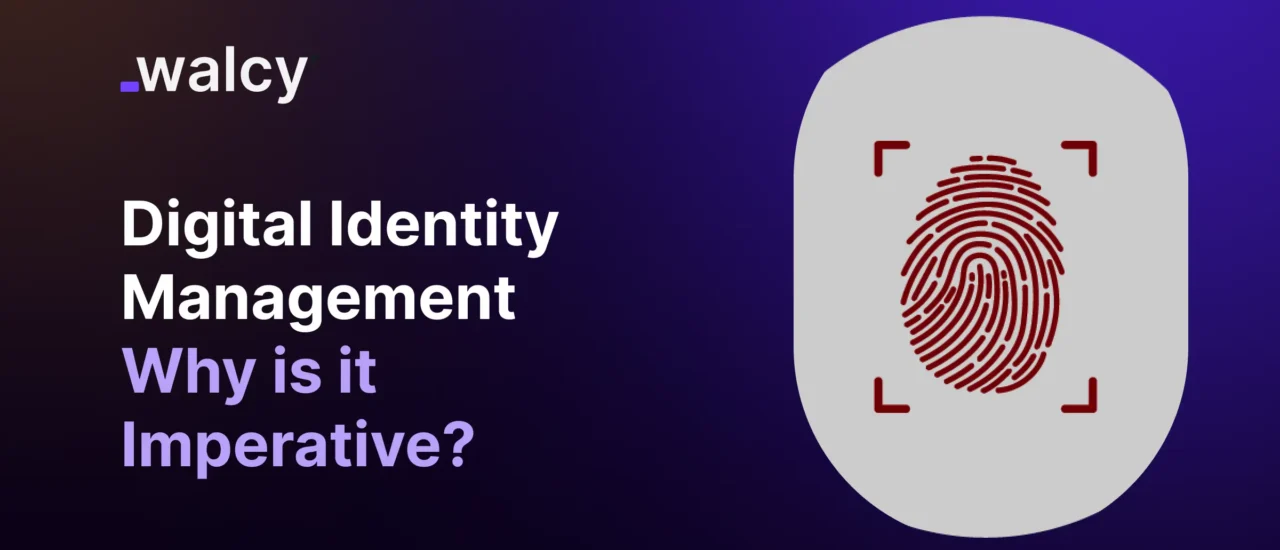In the constantly changing digital environment, identity management has risen as one of the most critical modules of cyber security and personal data protection. Managing digital identity is the process of administering and securing information that uniquely identifies individuals in a digital environment. With businesses and the lives of people migrating to online platforms, the need for robust online/digital identity solutions could not be more urgent.
What is Digital Identity Management?
It refers to the practice of developing, verifying, and controlling identification in a digital and connected life cycle. Digital identity, on the other hand, refers to unique identifiers and attributes such as usernames, passwords, biometrics, and others, which distinguish one individual in a digital environment.
The process, in other words, concerns the authentication of a user provides access to resources, and secures a person’s identity from unauthorized use. The overall aim is to gain secure and at the same time efficient access to digital services and, in the process, protect privacy.
The Digital Identity Imperative
As services went online, digital identity management started getting very complex for the user. This soon emerged as, more or less, multi-accounts for the user, each having a separate set of credentials that needed to be maintained. This fragmentation causes issues such as password fatigue, identity theft, and unauthorized access.
These are some of the challenges that digital identity solutions help solve by providing centralized and secure means by which identities can be managed. These solutions ease the user experience, reduce the risks of a data breach, and cover one up in terms of compliance with regulatory requirements.
Key Elements of Online Identity Management
Authentication: It assures the identity of a user before granting him or her entrance to the system. For this purpose, one well-accepted method is password control—biometrics and multi-factor among others.
Authorization: This is considered to be the process of determining what type of services are offered and information to which a user can have access once the identification of a person is verified; that’s to say, a user is allowed to get at information or services that have earlier been permitted.
User Lifecycle Management: Continuous management of a digital identity from the point it is created to the point it is deleted. This includes regenerating user information, realigning of permissions, and assurance that identities are securely retired when no longer necessary.
Single Sign-On (SSO): This is a digital identity solution that will enable a single authentication of a user to access many different systems. In that way, SSO makes a reduced number of credentials much easier for the user to remember.
Digital Identity Services
To businesses and governments, digital identity services are very critical since their imprints have an extensive volume of personal information. These services, in essence, provide a solid framework for the secure management of digital identities. The framework ensures stringent compliance to various privacy regulations like the General Data Protection Regulation [GDPR] and the California Consumer Privacy Act [CCPA].
Digital identity services refer to tools that are associated with the process of identity verification for the user, user authentication, and identity lifecycle management happening on digital business channels. Such services ensure the safety of personal data, which, in turn, guarantees no identity theft and enhances trust.
Role of Blockchain in Identity Management
Nowadays, blockchain technology has been explored to be a good solution for digital identity management. Such a solution, therefore, makes blockchain an appropriate solution for decentralized, tamper-proof storage and management of digital identity records of people securely and privately.
Blockchain-based identity management systems can give users more control over their digital identities. Users can have their identity information stored on a blockchain, where encryption and protection from access by other persons takes place, instead of under the supervision of centralized authorities.
This approach mitigates the risks of identity theft and fraud, for personal data is not swept into one vulnerable honeypot. Blockchain also allows for verifiable credentials where a user can prove who they are without having to reveal any more personal information than is necessary unique string of characters
Learn more about: International Payment fraud
Blockchain for Identity Verification
With blockchain, it can readily revolutionize identification verification by forming a secure and unchangeable identity information repository. This can be of big importance since financial services are too big an area, which needs intensified efforts against fraud, besides which—there is an increased need to comply with regulations.
The Future of Blockchain for Identity Management
As blockchain technology matures through the years, it will have a grander role in digital identity management. Works in the future will involve fusing blockchain with other technologies, including artificial intelligence and with biometrics, for more robust, user-friendly management of ever-increasing levels of identity information.
The Role of a Digital Identity Manager
In the case of an organization, a digital identity manager deals with the implementation and maintenance of digital identity solutions. For such purposes, it has to ensure the implementation of secure, efficient, and legally compliant identity-related practices under all circumstances.
Collaborate with IT and cyber security teams to design and deploy well-crafted strategies on identity management. The digital identity manager also ensures that all possible vulnerabilities are well mitigated amid monitoring and responding to any security incidents related to identity.
Challenges with Managing Digital Identities
Even though digital identity has advanced with time, the following are potential challenge areas for organizations:
Privacy Concerns: Digital identity deals with sensitive personal information and hence raises the specter of privacy in the minds of customers/users, so it is to be taken care of that the management of identity complies with the various privacy legislations.
Security Risks: Attackers are open and free to play with digital identities. To secure the two identities from identity theft fraud and unauthorized use, this has to be physically tougher for the organization, with both sorts of stringent security.
User Experience: While security is critical, it should not be enforced at the expense of user experience. In this context, this tradeoff between security and usability is a critical challenge at the heart of digital identity management.
Regulatory Compliance: Different geographies have different laws that regulate how the personal data of people is managed. An organization should, therefore, ensure that its digital identity practices are in line with the law.
What Next in the Digital Identity Management Space?
The future of digital identity management is bound to be shaped by the developments likely to take place through technologies and the greater importance of privacy and security. Some of those will include decentralizing solutions in which users control a greater part of their digital identity and the introduction of AI into the identity verification process.
As previously mentioned, over time, more and more changes in the digital space will only result in an increased need for more secure, effective, and user-friendly solutions in and around digital identity. By managing digital identity, therefore, organizations can remain secure around their users, be compliant with regulations, and continue to thrive in today’s increasingly digital world.
CONCLUSION
Thus, at the very base of modern cyber security, it is the management of digital identity, which is an activity envisaged to safeguard personal information to ensure access to online services securely. This evolution of digital identity solutions, therefore, with technological advancement, is bound to bring ever-finer facets in the new paradigms underpinning identity and access management of the future. Organizations must push the envelope in adopting next-generation, innovative identity management strategies to safeguard both users and the pertinent data.
Know about the cheapest way to transfer money abroad
Do follow us on Facebook and LinkedIn, to stay connected with us.



